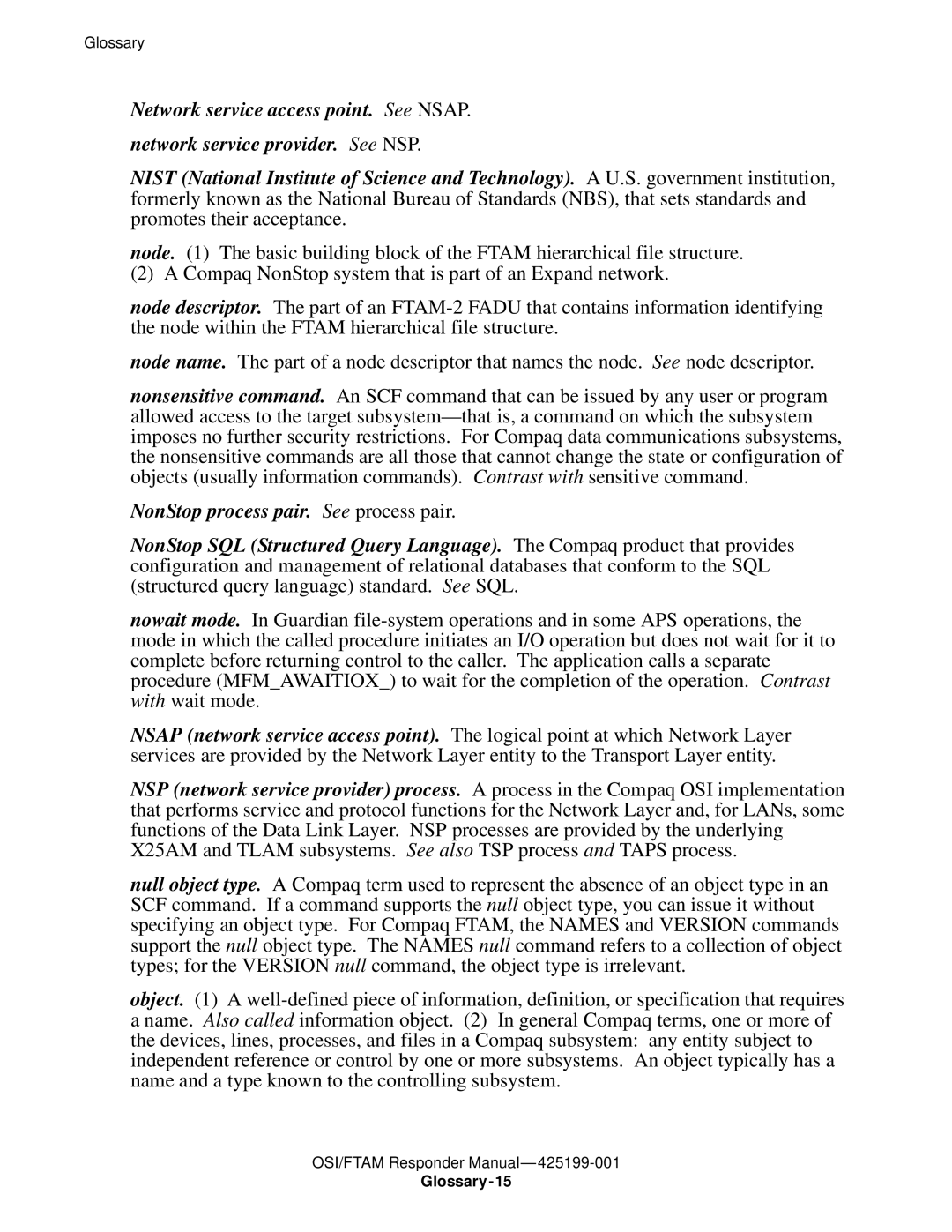Glossary
Network service access point. See NSAP. network service provider. See NSP.
NIST (National Institute of Science and Technology). A U.S. government institution, formerly known as the National Bureau of Standards (NBS), that sets standards and promotes their acceptance.
node. (1) The basic building block of the FTAM hierarchical file structure.
(2) A Compaq NonStop system that is part of an Expand network.
node descriptor. The part of an
node name. The part of a node descriptor that names the node. See node descriptor.
nonsensitive command. An SCF command that can be issued by any user or program allowed access to the target
NonStop process pair. See process pair.
NonStop SQL (Structured Query Language). The Compaq product that provides configuration and management of relational databases that conform to the SQL (structured query language) standard. See SQL.
nowait mode. In Guardian
NSAP (network service access point). The logical point at which Network Layer services are provided by the Network Layer entity to the Transport Layer entity.
NSP (network service provider) process. A process in the Compaq OSI implementation that performs service and protocol functions for the Network Layer and, for LANs, some functions of the Data Link Layer. NSP processes are provided by the underlying X25AM and TLAM subsystems. See also TSP process and TAPS process.
null object type. A Compaq term used to represent the absence of an object type in an SCF command. If a command supports the null object type, you can issue it without specifying an object type. For Compaq FTAM, the NAMES and VERSION commands support the null object type. The NAMES null command refers to a collection of object types; for the VERSION null command, the object type is irrelevant.
object. (1) A
